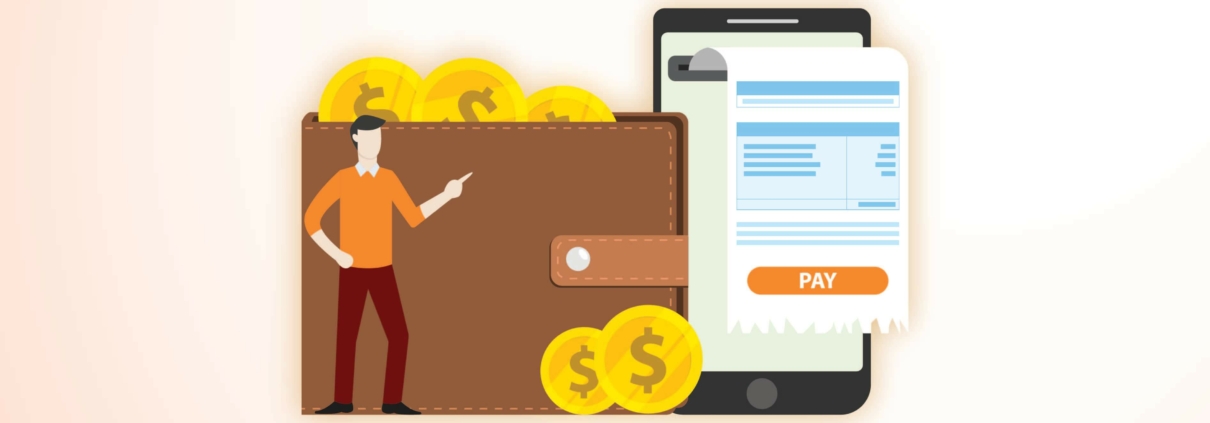How to authenticate digital wallet users with 3DS2
The proliferation of alternative payment solutions and mobile technologies has changed how we do business. On one side, technology is helping eCommerce grow and on the other side, it is making it easier for scammers to cheat and steal.
Customer identity verification is a significant challenge today, especially when it comes to online transactions. The latest European Payment Service Directive, more commonly known as PSD2, is working on introducing new standards and requirements.
Beginning in September 2019, Strong Customer Authentication (SCA) standards are being introduced for better protection of online payments. The 3D Secure 2 (3DS2) messaging protocol is designed to help businesses comply with the updated PSD2- SCA requirements.
The new protocol introduces non-payment authentication that makes it possible to be used in scenarios such as adding a card to a digital wallet or setting up a recurring payment.
Let’s find out more about how you will be able to authenticate non-payments in digital wallets with 3DS2…
What is Non-payment Authentication?
It is essential to understand the mechanism behind the original 3DS1 protocol to understand non-payment authentication.
The original system asks the payer to verify identity to complete a transaction. This happens at the checkout page, usually in the form of a new window that would ask users to perform a specific action to verify they are the actual holders of the card.
While heavily in use, the system is not very effective since it does not work well on mobile devices. Plus, users do not always trust a ‘new window’, and many would abandon the purchase at this stage.
The new system, 3DS2 by EMVCo, solves this problem as it works frictionlessly on all types of devices, including mobile-based browsers. Additionally, it allows merchants to complete the verification process before the final payment stage to help reduce cart abandonment rates.
Moreover, the new 3DS2 system reduces the risk of fraud. A large number of people do not completely trust online vendors and hence stay away from sharing their financial details. Most will quit a website that opens new windows to verify payments or share personal information.
The situation can be stressful for the buyer who has to be extra cautious. The new system will make the process easier and less stressful. Users will be able to verify information on the actual site, thus building trust.
What About Mobile Applications?
Since a large number of people use mobile apps to make purchases, it is vital to have a system that supports apps.
3DS2 will have a significant impact on the mobile payments industry. We are also going to see new mobile SDK designed to help merchants integrate the new system into their mobile apps.
Mobile wallets are also going to play an important role here. The demand for mobile wallets, also called eWallets, has increased as more people are now using mobile devices to make payments. eWallets offer convenience and allow users to make payments in a secure and quick manner.
The Role of Digital Wallets
The use of digital wallets is expected to grow even more in the future due to a growing number of companies entering the industry. The success of cryptocurrencies has also helped the digital wallet industry.
Research performed by MasterCard highlighted the growing interest in digital wallets. According to the report, about 75% of all social media conversations discussed eWallets in some capacity.
It shows that users know or at least want to know about digital wallets. According to another survey, about 100% of users who make online purchases would be interested in using a digital wallet if it offers rewards.
eWallets already provide several benefits in the form of ease and convenience, and they are believed to be safe as well.
Users can store their debit or credit card details on the app and complete future payments without having to go through the trouble of entering payment details every time they make a purchase.
3DS2 is expected to play a vital role in this regard. It will allow merchants to authenticate payments through their own mobile apps. With this system, the authentication process has officially moved from the payment environment to a non-payment, issuer approved environment.
Users will feel safe during the authentication process since it will be completed within the same app and it is native environment without any additional window popups.
eWallet providers will be able to verify users by borrowing information from the issuing bank. This will be made possible by connecting to card scheme Directory Server, using Mobile SDK approved vendors and a 3DS server.
PSD2 and Non-payment Authentication
All in all, 3DS2 is the only issuer approved authentication method available to merchants.
According to Jonathan Main, a member of the EMVCo Board of Managers, representing Mastercard, EMVCo is paying special attention to customer experience. The new system will not only benefit merchants but buyers as well.
With one implementation (3DS2 Server / Mobile SDK), merchants will be able to tap into the largest authentication network (i.e. Visa 3D Secure 2 Verified by Visa, Mastercard 3D Secure 2 Identity Check, American Express SafeKey 2.0, JCB 3D Secure 2 J/Secure, Discover 3D Secure 2 ProtectBuy, and UnionPay 3D Secure 2.0).



